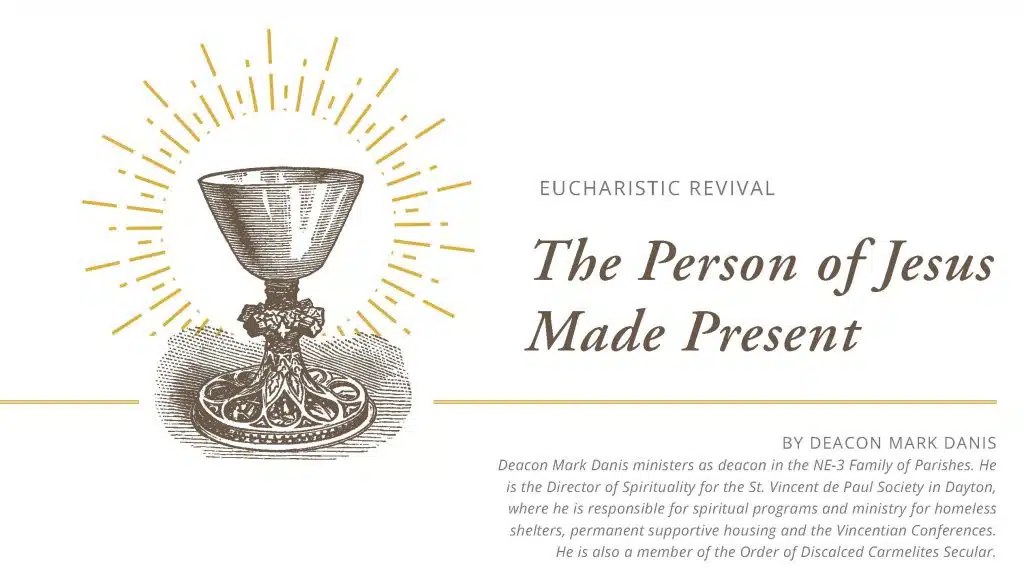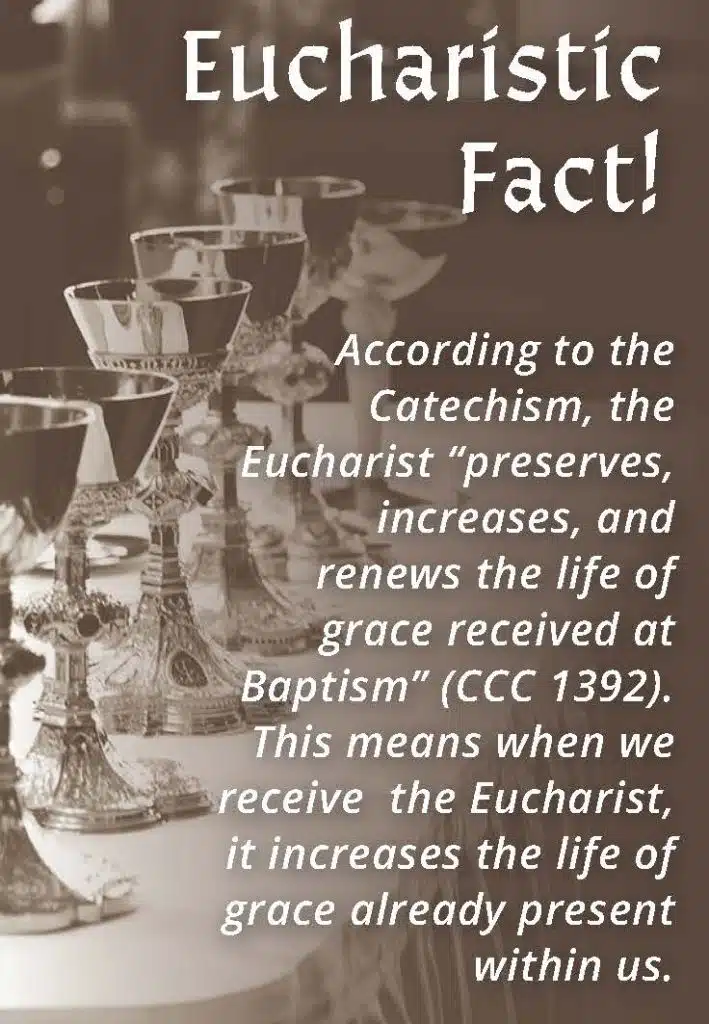Eucharistic Revival: The Person of Jesus Made Present
 But they urged him strongly, saying, “Stay with us, because it is almost evening, and the day is now nearly over.” So he went in to stay with them (Lk. 24:29).
But they urged him strongly, saying, “Stay with us, because it is almost evening, and the day is now nearly over.” So he went in to stay with them (Lk. 24:29).
The two disciples’ request for Jesus to remain with them when they arrived at Emmaus was the theme of Pope St. John Paul II’s 2004 Apostolic Letter, Mane Nobiscum Domine, “Stay With Us Lord.” Expressing the Holy Father’s desire that the faithful deepen their encounter with Christ in the Eucharist, it was the foundational document for The Year of the Eucharist, October 2004 to October 2005.
Now, the Church’s three year National Eucharistic Revival offers the faithful of today the opportunity to reflect upon and deepen our personal relationship with Jesus Christ in the Eucharist. Such a relationship can only emerge from a genuine desire for an intimate encounter with a Person, the One who is Love (1 Jn. 4:8). As with every relationship, desire for the other person’s company develops over time, but must also be nurtured by remaining in the Presence of the One we love.
My own experience of the Lord’s Presence came after reflecting for hours on the phrase: The Real Presence. These words, which describe the essence of the Eucharist, are best understood independently.
As a young adult, I readily accepted that the consecrated host contained our Lord’s Body, Blood, soul and divinity; He is Real. But only after years of attending Sunday and daily Mass and spending hours in Adoration, did I recognize the Person of Jesus Christ as fully Present in that same host.
The Eucharist is not merely a portion of our Lord’s body made available for our spiritual nourishment. It is truly the man—flesh, mind and heart of the Son of God. As Pope Benedict XVI wrote in his Encyclical Letter, Deus Caritas Est (God is Love), our Christian faith is “the encounter with a person.” In the Eucharist we come in contact with a whole person—a living, loving being.
In our Dayton St. Vincent de Paul Homeless Shelter chapel, many of our guests seek this encounter in silence and solitude during weekday Hours of Eucharistic Adoration. They don’t worry about what to say or do in His Presence. Instead, as St. John of the Cross counsels, they let Christ become the center of attention.
What we need most in order to make progress is to be silent before this great God, with our appetite and with our tongue, for the language He best hears is silent love (Sayings of Light and Love, 132).
And then, for the Eucharist to achieve its desired effect, we must learn to abandon ourselves to this Presence and allow the Lord to fully transform us into the model of the Image in which we were created.
In his Apostolic Exhortation, Sacramentum Caritatis (Sacrament of Charity), Pope Benedict XVI pointed out both the way we must travel and the final destination of our encounter with Christ in the Eucharist.
“This is … the way in which the truth of God’s love in Christ encounters us, attracts us, and delights us, enabling us to emerge from ourselves and drawing us toward our true vocation, which is love.” To fulfill our vocation, we ourselves must stay with the Lord.
Let this be our prayer: We yearn for a relationship with You, Lord. We cry out from our hearts; Lord, do not leave us; remain with us, remain in us, let us remain in you, until you transform us into Love itself.
And we find our Hope in the Lord’s own response to our desire to have Him stay with us: I am with you always, to the end of the age (Mt. 28:20).
This article appeared in the April 2023 edition of The Catholic Telegraph Magazine. For your complimentary subscription, click here.















